+256 760 038002
info@visitafrica.site
Visit Marrakesh
Marrakesh, also spelt as Marrakech, is the fourth largest city in the Kingdom of Morocco. It is the capital of the mid-southwestern region of Marrakesh-Safi. It is west of the foothills of the Atlas Mountains. Marrakesh is the main tourist destination in Morocco, North Africa and the in the African Continent. Marrakesh City's old town is also a UNESCO World Heritage Site
About Marrakesh
Marrakesh, also spelt Marrakech, is one of the imperial cities of Morocco. The name Marrakesh originates from the Amazigh (Berber) words mur (n) wakush, which means "Land of God". It is the third largest city in Morocco after Casablanca and Rabat, and lies near the foothills of the snow-capped Atlas Mountains and a few hours away from the foot of the Sahara Desert. Its location and contrasting landscape has made it an enviable destination in Morocco. The city is divided into two parts: the Medina, the historical city, and the new European modern district called Gueliz or Ville Nouvelle. The Medina is full of intertwining narrow passageways and local shops full of character; it also contains the large square Djemaa El-Fna, where many hotels are located and tourists, locals and vendors congregate. In contrast, Gueliz plays host to modern restaurants, fast food chains and big brand stores.
Geography
By road, Marrakesh is 580 kilometres (360 mi) southwest of Tangier, 327 kilometres (203 mi) southwest of the Moroccan capital of Rabat, 239 kilometres (149 mi) southwest of Casablanca, 196 kilometres (122 mi) southwest of Beni Mellal, 177 kilometres (110 mi) east of Essaouira, and 246 kilometres (153 mi) northeast of Agadir. The city has expanded north from the old centre with suburbs such as Daoudiat, Diour El Massakine, Sidi Abbad, Sakar and Amerchich, to the southeast with Sidi Youssef
Climate
A hot semi-arid climate predominates at Marrakesh. Average temperatures range from 12 °C (54 °F) in the winter to 26–30 °C (79–86 °F) in the summer. The relatively wet winter and dry summer precipitation pattern of Marrakesh mirrors precipitation patterns found in Mediterranean climates. However, the city receives less rain than is typically found in a Mediterranean climate, resulting in a semi-arid climate classification.
History
The Marrakesh area was inhabited by Berber farmers from Neolithic times, and numerous stone implements have been unearthed in the area. Marrakesh was founded in 1062 (454 in the Hijri calendar) by Abu Bakr ibn Umar, chieftain and second cousin of the Almoravid king Yusuf ibn Tashfin. Under the berber dynasty of the Almoravids, pious and learned warriors from the desert, numerous mosques and madrasas (Quranic schools) were built, developing the community into a trading centre for the Maghreb and sub-Saharan Africa. Marrakesh grew rapidly and established itself as a cultural and religious centre, supplanting Aghmat, which had long been the capital of Haouz. Andalusian craftsmen from Cordoba and Seville built and decorated numerous palaces in the city, developing the Umayyad style characterised by carved domes and cusped arches. This Andalusian influence merged with designs from the Sahara and West Africa, creating a unique style of architecture which was fully adapted to the Marrakesh environment.
For centuries Marrakesh has been known as the location of the tombs of Morocco's seven patron saints (sebaatou rizjel). When sufism was at the height of its popularity during the late 17th-century reign of Moulay Ismail, the festival of these saints was founded by Abu Ali al-Hassan al-Yusi at the request of the sultan. The tombs of several renowned figures were moved to Marrakesh to attract pilgrims, and the pilgrimage associated with the seven saints is now a firmly established institution.
menu
About Africa
Cities in Africa
Visit Uganda
Visit Kenya
Visit Tanzania
Visit South Africa
Visit Namibia
Visit Zimbabwe
Visit Egypt
Visit Rwanda
Visit Morocco
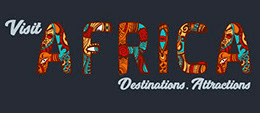
380x507.jpg?crc=3900966106)
Getting In
- By Plane; Marrakesh-Menara Airport; The airport has two terminals housed in one complex. Both terminals have money exchange offices, and there is an ATM in the arrivals hall of Terminal 2. On ATMs, check for the Maestro, Cirrus or Plus logos to be sure that the machine accepts foreign credit cards. Some ATMs work only in French. If your card is taken at the ATM, tell airport security and they can help you get it back.
- By Car;
- By Train; Trains from Casablanca (2nd class 84 dirham, 1st class 150 dirham, 3 hr), Rabat and Tangier connect with most domestic rail destinations in the country, with Marrakesh as the southernmost stop. Trains run regularly between Marrakesh and Casablanca (including the International Airport). They arrive around every two hours and regularly from other destinations like Rabat. Every day there are 8 direct 7 hr trains to Fez via Casablanca Voyageurs station and another two direct connections to Tangier.
- By Bus;
- By Boat
- By Taxi
Getting Around
Once in the medina, everything can be seen on foot, though you'll be doing a lot of walking. Many tourist destinations are signposted by brown, red or green signs affixed to posts or to buildings.
- By Car Rental
- By Caleche; An alternative and romantic way to travel is by caleche, a small horse-drawn carriage. They can be hired at Square de Foucauld (the small park to the south of Djemaa El-Fna). It's wise to agree on a price before setting off.
- By Bus; Almost all buses stop at Djemaa El-Fna (the bus stop for Djemaa El-Fna is called Terminus Arset El Bilk, and it is marked on Google Maps) and Place Youssef Ben Tachfine and fares range from 2–5 dirham depending on the distance
- By Taxi; You should always ask to use the meter
380x254.jpg?crc=3954584097)
Attractions (What to See)
There is much to see and do in Marrakesh. An entire day can be dedicated to wandering around all the different souks, seeking out the best bargains. The city also offers several historical and architectural sites as well as some interesting museums;
- Djemaa El-Fna; The highlight of any Marrakesh night. Musicians, dancers, and story tellers pack this square at the heart of the medina, filling it with a cacophony of drum beats and excited shouts. Scores of stalls sell a wide array of Moroccan fare (see the Eat section) and you will almost certainly be accosted by women wanting to give you a henna tattoo. Enjoy the various shows, but be prepared to give some dirham to watch or take photos. By day it is largely filled with snake charmers and people with monkeys, as well as some of the more common stalls.
- The Souks (suuqs); Markets of Marrakesh, just adjacent to Place Djemaa El-Fna, are where you can buy almost anything, from spices to shoes, jellabas to kaftans, and tea pots to tagines. Undoubtedly, being a foreigner means you will end up paying higher prices than a native would, but be sure to bargain nonetheless.
- Koutoubia Mosque (right besides Djemaa El-Fna); Named after the booksellers market that used to be located here. It is said that the minaret of the Koutoubia mosque is to Marrakesh as the Eiffel Tower is to Paris. The minaret is visible from Gueliz which is connected to the Medina by Avenue Mohammed V. At night, the mosque is beautifully lit. It was completed under the reign of the Berber Almohad Caliph Yaqub al-Mansur (1184 to 1199), and has inspired other buildings such as the Giralda of Seville and the Hassan Tower of Rabat.
- Tanneries; Visiting the tanneries can be an interesting experience. Even if some people tell you the area is only for locals, it is possible to visit the Tanneries without paying a youngster. After finding a tannery, ask one of the workers if you can visit it and take pictures
- Saadian Tombs. The tombs were not discovered until the beginning of the 20th century. They have been preserved just like they were during the glory days of the Saadian rulers. Unlike the El Badi Palace, they were not destroyed, probably for superstitious reasons. The entrance was blocked so they remained untouched for hundreds of years. Inside you will find an overload of Zelij (Morrocan tiles) and some beautiful decoration. It's rather small so it does not take a lot of time to explore. Also there are no explanatory signs whatsoever in the venue, so it's recommended to hire a guide to explain you what you're seeing to get the most out of your visit.
- Majorelle Gardens (Jardin Majorelle); It provides an excellent respite from the hustle and bustle of the city streets, if not crowded by tourists as it sometimes is. The park was designed by the artist Jacques Majorelle in the 1920s and 1930s. Since 1980 the garden has been owned by Yves Saint-Laurent and Pierre Bergé. It boasts a collection of plants from around the globe, including what seems like every cactus species on the planet.
- Yves Saint Laurent Museum, Rue Yves St Laurent
- Dar Si Saïd Museum; Museum set in an old palace with beautiful gardens. While somewhat run-down, it is worth seeing and houses many different artifacts from Morocco through the ages, such as wood carvings, musical instruments, and weapons. It is dedicated to the Moroccan craft industry of wood, gathering a very beautiful collection of popular art: carpets, clothing, pottery and ceramics.
- Ben Youssef Madrasa; One of the largest madrassas in North Africa. It is a school attached to the Ben Youssef Mosque and is home to beautiful art and architecture.
- El Bahia Palace; An ornate and beautiful palace, built at the end of the 19th century for grand viziers of the sultan. Popular with guided tours and stray cats. The palace is well worth a visit and gives a great impression of what it must have been like to be a 19th-century nobleman in Morocco. There is a nice garden with banana flowers, tranquil courtyards, and other lovely plants. Attention must be given in finding the entrance.
- El Badi Palace; A palace now in ruins and inhabited by storks and stray cats. There are some underground passageways to explore with exhibitions within them. Note that most explanatory text is only in Arabic and French. Newer exhibitions have text in English as well but those are still the minority. The view from the terrace is majestic. The palace was built by Sultan Ahmed al Mansour to celebrate the victory of the Portuguese army in 1578 in the Battle of the three kings. They also exhibit a wooden minbar that dates back to the 12th century and is on display in a single room with some explanations. A minbar is a preaching chair. Also hosts the Marrakesh Museum for Photography and Visual Arts (abbreviated MMP+), a small museum which however showcases great pieces of visual art.
- The Menara gardens; A mixture of orchards and olive groves surrounding the water reservoir with the central pavilion which is a popular sight on tourist postcards. Not a decorative garden, and now quite run down. The pavilion was built during the 16th-century Saadi dynasty, and renovated in 1869.
- Jewish Cemetery; The largest Jewish cemetery in Morocco, characterized by white-washed tombs and sandy graves. The men selling tickets are full of interesting information about the cemetery but you have to ask.
- Slat Al Azama Synagogue; Synagogue which is not only a place of worship with a beautiful open courtyard, but also includes interesting displays about Judaism's varied history in Morocco, including photos of Jews in the Berber Mountains.
- Marrakesh Museum; It's housed in the Dar Menebhi Palace, constructed at the end of the 19th century.
- Musée de la Palmeraie, Dar Tounsi, Route de Fès (in the south of the Palmeraie, it is quite off the main tourist paths, expect to travel at about an hour per direction; you must get a taxi or bus 17 towards Palmeraie (which does not run often); the route with the museum is off to the left side of the road, the crossroads just before the Atacadao supermarket; you have to head follow the road for about 500 m, there are also signs), In old agricultural buildings in the Palmeraie, made out of rammed earth. The architecture itself is interesting if you haven't seen it. It offers a small collection of contemporary art, with a room dedicated to Morrocan artists (also famous ones), the international ones are rather not top-notch.
- Musee Farid Belkahia; A museum dedicated to the renowned contemporary artist Farid Belkahia, showcasing different periods of his work
- Tiskiwin Museum, Derb El Bahia 8; About the people in the Sahara. Created by Dutchman Bert Flint.
- Maison de la Photographie; A little photography museum, it has one of the highest roof terraces in the Medina.
- Ali Ben Youssef Mosque; The first mosque in Marrakesh was erected at this place by the Almoravid emir Yusuf ibn Tashfin in the 1070s. However, it was almost completely rebuilt in early 19th century by the Alaouite sultan Suleiman, with hardly any trace left of its original Almoravid or Almohad design. Non-Muslims are not allowed to enter it.
- Agdal Gardens; It consists of groves of orange, lemon, fig, apricot and pomegranate trees in rectangular plots, linked by olive-lined walkways. Together with the medina of Marrakesh and the Menara Gardens, the Agdal Gardens were listed by UNESCO as a World Heritage Site in 1985.
Things to Do
- The Medina; The main square in the Medina is Djemaa El-Fna. It is surrounded by endless labyrinths of souks (bazaars) and alley ways covering all of the Medina. Djemma El-Fna is a must as there is always something to see there day and night whether it be snake charmers, acrobats, sooth-sayers,or the musicians and food stalls. At night the square really comes to life as people navigate toward the exotic aromas and the entertaining sights. As the evening darkens, the hustle & bustle of activity rages on. The exotic music appears louder and more hypnotic. The Medina is also the place to stay in a Riad, a Moroccan house with an internal courtyard. Most windows are inward facing towards the central atrium. This design of property suits Islamic tradition as there is no obvious wealth statement being made externally, no windows to peer through. Entering a Riad is like discovering an Aladdin's Cave in comparison to its non-descript exterior. They are great places to stay and offer an intimate and relaxing retreat.
- Hammams; Hammams are baths, often close to mosques to facilitate the performance of ablutions. In guidebooks and signs that call them "Moroccan Turkish Baths" the name "Turkish" is a misnomer, since Morocco (unlike Egypt or Syria) was never under Ottoman rule, but the historical role of the baths is authentic in Morocco.
- Desert Trekking; Marrakesh is not in the desert: you will spend several hours to get to the desert and that day tours are therefore pretty stressful. If you have the time, spend at least one night in the desert or in a town close to your desert trekking destination.
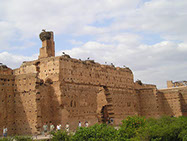
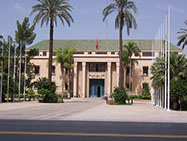
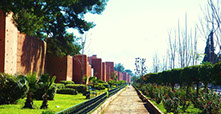
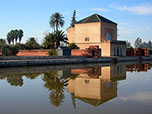
Where to Stay (Accommodation)
Marrakesh has an amazing choice of places to stay ranging from tented camps outside Marrakesh to cheap hostels and hotels that can be charming or seedy to luxurious kasbahs in luxurious gardens or the traditional riad (garden courtyard) hotels. Wherever you choose ( or can afford) to stay it really is a must to visit one of the riad hotels to see this amazing style of architecture. Most riad managers will be happy to show you around provided that they are not too busy and in some riads you can even book a lunch or dinner without being a resident provided that the riad is not privately rented. For example, see Riad Cinnamon, Riad Laksiba and Riad Papillon.
Riad:
The Medina is packed with Riads and Dars (old grand houses converted into hotels and inns). Riads should have gardens; with smaller Dars having open courtyards. However the term Riad is used very loosely today to describe a house with an internal open-air centre. These are wonderful places to stay to get a feel for life in Marrakesh;
- Riad Abaka, 21 Derb Roukni Laksour, A spacious riad with seven beautifully furnished bedrooms and ensuite bathrooms. Located in the heart of the Medina, less than two minutes walk from Jemaa El Fna.
- Riad Amazigh (Equity Point Marrakesh), 80, Derb El Hammam Mouassine (Nearby Djemaa el-Fna); A former luxury riad now a beautiful hostel. Doubles, singles, and dorms which house up to 8 people. Roof top terrace with nice views, unheated pool, restaurant and bar. WiFi in communal areas, breakfast included. Open 24 hrs, can book activities and excursions.
- Riad Basma, Marrakesh-Medina, 22 Derb Jamaa, Riad Basma (From square Jamaa el Fna walk up to derb Dabachi and count 3 small streets (derbs) on the right turn right and keep on until nr. 22.)
- Riad Chennaoui, Riad Zitoune Jdid, Derb Sidi Fares N°01; Simple and basic riad in the Medina. The staff are friendly and happy to discuss Moroccan life and culture over a shisha in the evening. This place can be difficult to find - you may have to pay a local to take you there (10-20 dirham should do it, although they will ask for more).
- Riad Cinnamon, 9 Derb El Hadjra; Designed and rebuilt to a very high standard with amazing attention to detail and lots of unexpected extras such as the loan of a local mobile phone and ipad loan. Dinners served on roof terrace with incredible views, pools on patio and roof garden terrace. 5 rooms that can accommodate 3 to 4 people each, with an overall maximum of 16.
- Riad Dar Eliane, 39 Derb Maada,Azbezt,Medina; Four spacious double bedrooms and bathrooms with A/C. Accommodation is on two floors of a restored 300 year old riad in an older and authentic quarter of Marrakesh. Ten minute walk to Jamaa el Fna.
- Riad Iaazane, 57 Derb el Gnayz , El Mouassine; A restored riad with extensive use of traditional styling and ceramics, includes a roof terrace with views. Shower, internet with wifi access, washing, shisha (hooka), free mint tea, city map. An authentic local style breakfast included.
- Riad LakLak, Marrakesh Medina; A riad built in the 17th century, which sleeps 12 in 2 suites and 3 bedrooms, that can be rented as a whole. It is between the "Palais Bahia" and the "Palais Badii", close to Jemaa El Fna Square
Discounted Hotels;
- Hotel Ali. Rue Moulay Ismail. Beds in en suite, dorms, and rooftop terrace mattresses for 60 dirham per person per night, including cooked breakfasts served with orange juice and fresh coffee. Dorm guests can use the internet cafe for 5 dirham per hour. They have a laundry service and free internet access for private room guests, money exchange, a terrace restaurant with views of Djemaa El-Fna, and a downstairs hammam.
- Hotel Salam (laksor), bab ftouh rue haram chikh n.14, laksor, Marrakesh; Cheap and clean hotels, doesn't seem to have showers.
- Hotel Atlas; A 2-min walk to the famous square of Djemaa El-Fna. Clean and friendly with nice rooms with shared bathrooms. Singles from 90 dirham, doubles from 170 dirham, for 3 people 250 dirham, for 4 people 280 dirham, for 5 people 320 dirham. There are some rooms with AC for an additional 50 dirham. The hotel is charming and all arranged in the traditional way. edit
- Hotel el-Ward, 65 derb Sidi Bouloukat,; Clean, quite comfortable, and the owners are very friendly whenever they feel like it. The rooftop terrace isn't lavish, but being one of the highest it does have a great view.
- Hotel Essaouira, 3 Derb Sidi Bouloukat; Overall a very good value and comfortable place from which to explore the old town.
- Hotel Imouzzer, 74 Derb Sidi Bouloukate; One of the cheapest and best-value hotels with rooms starting at 65 dirham for singles and 120 dirham for doubles (slightly higher in high season), all with shared bathrooms. Rooms are arranged around a traditional courtyard, and both rooms and shared bathrooms are clean with hot water. The hotel also has a comfortable terrace where you can eat breakfast
- Hotel Sindi
- Hotel Smara, 77 sidi Bouloukat. Near Djemaa El-Fna; Very clean, friendly people, nice rooms.
- Hotel Cecil. At the Djemaa El-Fna, Bouloukate. Offers doorms, rooms with shared bathroom
- Palm Plaza Hotel and Spa, Avenue du 7ieme Art Zone Touristique Agdal (located in Agdal, a new residential district, 10 mins from the airport); Luxurious and comfortable providing 230 rooms, including 151 twin, 52 double, 2 rooms for disabled persons, 6 junior suites, 20 senior suites and a royal suite. The hotel has a piano bar, night club and a restaurant. Snacks are available at the pool bar. The spa features a heated indoor swimming pool, a sauna, a hammam and a gym
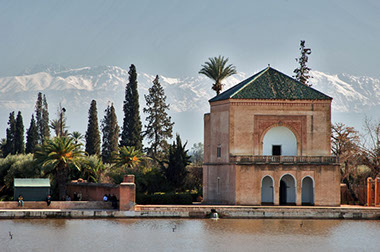
Visit Africa is an African tourism brand of Architect Tourism SMC, that profiles every tourist destination, in every country, in Africa; Destinations, How to get there, Attractions, Things to do, How to get around, itinerary pricing and Where to stay, for an adventurous breathtaking and thrilling experience of tourism of Africa.
Visit Africa
Destinations
We are Social!
Search this Site!
About Africa
Visit Africa
Visit Uganda
Tanzania
Visit Kenya
Visit Egypt
Cities in Africa
Visit Morocco



Visit South Africa
Visit Namibia
Visit Zimbabwe
Wildlife in Africa
Visit Africa Copyright © 2019 - Visit Africa is a Tourism Brand of Architect Tourism SMC Limited.
Architect Tourism SMC is an African tourism company, crafted to inspire and enable a breathtaking beautiful experience of Africa. Visit Africa is one of Architect Tourism SMC tourism brands. Visit Africa is inspired to craft innovative, fun and breathtaking tourism events, trips, excursions, getaways, safari, vacations, holiday, and tours experiences.
Vision: To inspire, craft, and enable a breathtaking beautiful experience of Africa.
Our Values: African, Oneness, Integrity, Client focused, Conservation focused, Innovative, Excellence, Simplicity.
Company Registration Number: 80020002986484
Company Tax ID: 1018106912
